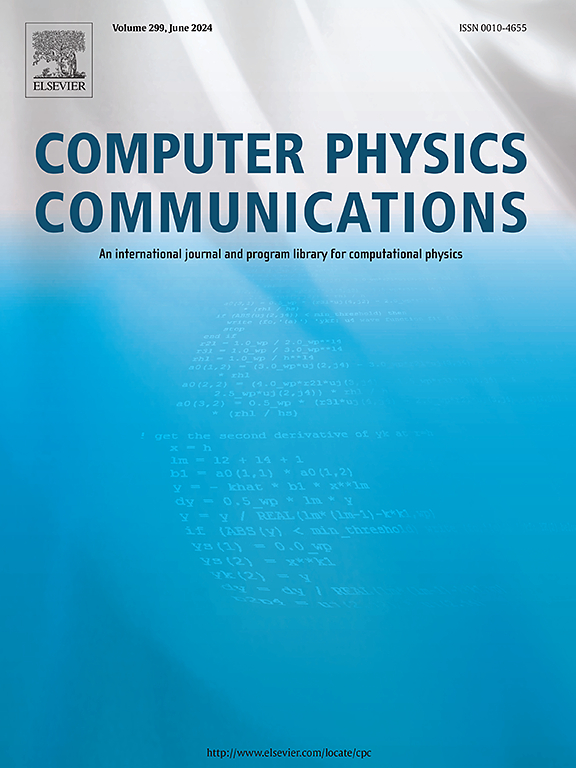利用对称适配的万尼尔函数高效计算磁晶各向异性能
IF 7.2
2区 物理与天体物理
Q1 COMPUTER SCIENCE, INTERDISCIPLINARY APPLICATIONS
引用次数: 0
摘要
磁晶各向异性是磁性能和磁阻随机存取存储器等应用中的一个关键因素,在第一原理计算中通常需要大量的-点网格。在这项研究中,我们建立了一个包含晶体和自旋对称性的万尼尔轨道紧密结合模型,并利用时间反转对称性来划分磁化分量。该模型可高效计算磁晶各向异性。将此方法应用于铂铁和镍铁,我们计算了各向异性能量对-点网格大小、化学势、自旋轨道相互作用和磁化方向的依赖性。结果验证了模型在这些系统的能量阶上的实用性。本文章由计算机程序翻译,如有差异,请以英文原文为准。
Efficient calculation of magnetocrystalline anisotropy energy using symmetry-adapted Wannier functions
Magnetocrystalline anisotropy, a crucial factor in magnetic properties and applications like magnetoresistive random-access memory, often requires extensive k-point mesh in first-principles calculations. In this study, we develop a Wannier orbital tight-binding model incorporating crystal and spin symmetries and utilize time-reversal symmetry to divide magnetization components. This model enables efficient computation of magnetocrystalline anisotropy. Applying this method to FePt and FeNi, we calculate the dependence of the anisotropic energy on k-point mesh size, chemical potential, spin-orbit interaction, and magnetization direction. The results validate the practicality of the models to the energy order of for these systems.
求助全文
通过发布文献求助,成功后即可免费获取论文全文。
去求助
来源期刊

Computer Physics Communications
物理-计算机:跨学科应用
CiteScore
12.10
自引率
3.20%
发文量
287
审稿时长
5.3 months
期刊介绍:
The focus of CPC is on contemporary computational methods and techniques and their implementation, the effectiveness of which will normally be evidenced by the author(s) within the context of a substantive problem in physics. Within this setting CPC publishes two types of paper.
Computer Programs in Physics (CPiP)
These papers describe significant computer programs to be archived in the CPC Program Library which is held in the Mendeley Data repository. The submitted software must be covered by an approved open source licence. Papers and associated computer programs that address a problem of contemporary interest in physics that cannot be solved by current software are particularly encouraged.
Computational Physics Papers (CP)
These are research papers in, but are not limited to, the following themes across computational physics and related disciplines.
mathematical and numerical methods and algorithms;
computational models including those associated with the design, control and analysis of experiments; and
algebraic computation.
Each will normally include software implementation and performance details. The software implementation should, ideally, be available via GitHub, Zenodo or an institutional repository.In addition, research papers on the impact of advanced computer architecture and special purpose computers on computing in the physical sciences and software topics related to, and of importance in, the physical sciences may be considered.
 求助内容:
求助内容: 应助结果提醒方式:
应助结果提醒方式:


